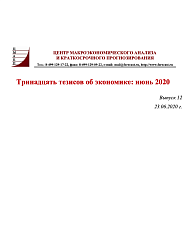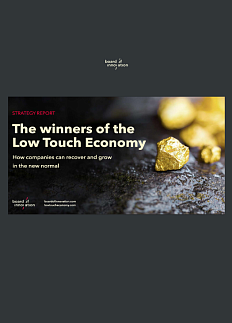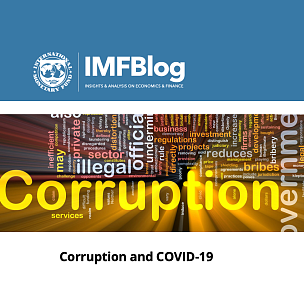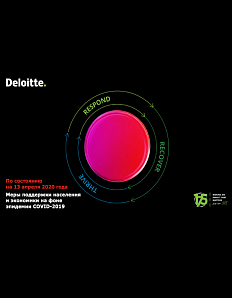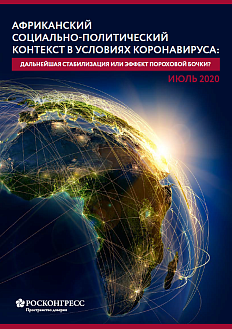Experts from the Center for Macroeconomic Analysis and Short-Term Forecasting (CMASF) present the 12th edition of Theses on Economics. The next article examines issues related to inflationary processes after the lifting of restrictions, the state of the Russian budget and the stabilization of industry after a deep recession. The authors note that the growth of inflation turned out to be moderate, at the moment the adjusted inflation estimate for June in annual terms is only 3.2-3.3%. However, there is a high probability that the exchange rate may still adjust in the second half of the year due to a decrease of currency inflow to the market and a seasonal increase in demand for currency. CMASF experts also note a possibility of a crisis in government demand; according to declared budgetary policy priorities, next year a nominal volume of budget expenses will be fixed at the current year level. This means that in real terms, government demand will inevitably fall.
Roscongress Foundation analysts highlighted the main theses of this research, accompanying each of them with suitable fragments of video broadcasts of panel discussions held as part of business programs of the key events hosted by the Foundation.
As the restrictions were lifted, the industry began to stabilize — except the oil sector, where the market is oversaturated and the OPEC + agreements work appropriately.
Behind a slight deepening of industrial downturn in May (to 90.4% after 93.4% in April) are significantly different responses to the «virus-oil» shock of various sectors.
From March to April, oil production «did not notice» the quarantine, but in May it «collapsed» immediately to 84.7%, during the period when the agreement with OPEC + on production limitation began. Taking into account a share of the sector in industry (over 20%), as well as an effect on the electric power industry, an additional negative contribution to the industrial production index exceeded 3 p.p., which led to a further «subsidence» of the industry in May.
Consumer goods sectors, as well as almost all transport engineering segments, were in the «over-hit» sector. This reaction is based on hypersensitivity to dynamics of population’s incomes, multiplied by quarantine restrictions.
In overall dynamics, a «cluster of winners» stands out, which includes pharmaceuticals, production of medical instruments and equipment. These sectors not only overcame the crisis successfully, but also showed an increase in profits by the time the restrictions were lifted.
The growth of inflation turned out to be moderate, at the moment the adjusted inflation estimate for June in annual terms is only 3.2-3.3%. However, there is a high probability that the exchange rate may still adjust in the second half of the year due to a decrease of currency inflow to the market.
Inflation slowed down in May and early June. Its April «devaluation» of the leap did not develop (April: + 0.83% versus March, May: + 0.27% versus April, June, according to data for the first 15 days: + 0.12%, which corresponds to 3.3 −3.4% in annual terms).
As a result, weekly inflation, which experienced a sharp surge in late March-early April (due to the devaluation of ruble and the rush demand for long-term foodstuffs, «traditional medicine» products and some types of medicines), slowed down in early May and became noticeably below the long-term average level.
The authors of the study note that against the generally favorable background, a certain potential for accelerated growth in bread prices has emerged due to a possible increase in cost inflation. Accelerated appreciation of grain (April: + 1.9%, March and February: 1.3% each) and price increases in the flour and cereal industry (April: 7.1%, March: 0.8%) create a potential for further acceleration growth of prices for bread, especially if in the current year (due to a poor harvest, a new weakening of ruble or for other reasons) the growth of purchase prices for grain will increase.
The Russian budget entered the crisis period quite prepared, especially in terms of accumulated reserves, but the current fiscal policy does not allow using accumulated reserves in full. This may have a negative impact on prospects for post-crisis economic recovery.
The federal budget has been preparing for a potential crisis for a long time and systematically: reserves were accumulating, the level of debt was maintained, the share of oil and gas revenues in the budget was decreasing, and restrictions were imposed on increasing budget expenses unsecured by non-oil and gas revenues. The authors of the study note that, with the exception of certain acutely crisis quarters — and even in the first quarter of this year — the federal budget was consistently in surplus.
By the beginning of the crisis, the federal budget had very significant reserves. The volume of the National Wealth Fund as of April 1, 2020 amounted to 11.3% of GDP (of which the liquid part, taking into account the April transaction for the purchase of Sberbank shares, is 8% of GDP). The state debt of the Russian Federation is one of the lowest in the world — as of April 1, 2020, it amounted only 12.8% of GDP (including government guarantees).
Thus, the Russian budget turned out to be more or less prepared for a new crisis in terms of accumulated reserves, but completely unprepared in terms of budget policy flexibility. The current fiscal rules system and the conservative («fiscal-oriented») approach to fiscal policy do not allow using the accumulated reserves in full.
At the moment, the government has approved three anti-crisis packages of measures with a total value of about RUB 3 trillion (including government guarantees and tax deferrals). The main sources of their financing are the Central Bank’s profit, last year’s account balances and the redistribution of part of previously approved expenses (which does not create a fiscal incentive).
Estimates show that such a volume of assistance to the economy is not enough for macroeconomic stabilization, and the prospects for post-crisis economic recovery, among other things, will depend on whether the approach to budget policy can be changed and the budget adapted to the new conditions.
See other materials posted in special sections of the Roscongress Information and Analytical System StayHome Economy, Economic Progress, Standard and Quality of Life, Financial Market and Monetary Policy, devoted to possible ways to stabilize the economy in a pandemic, as well as measures aimed at stimulating economic progress.


